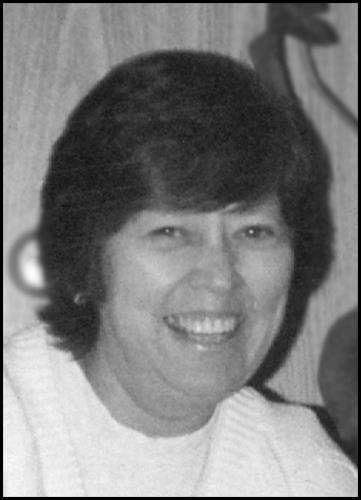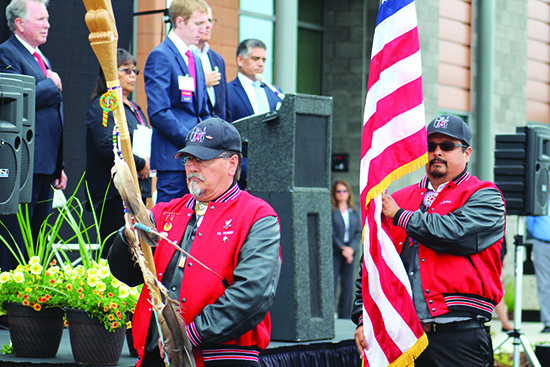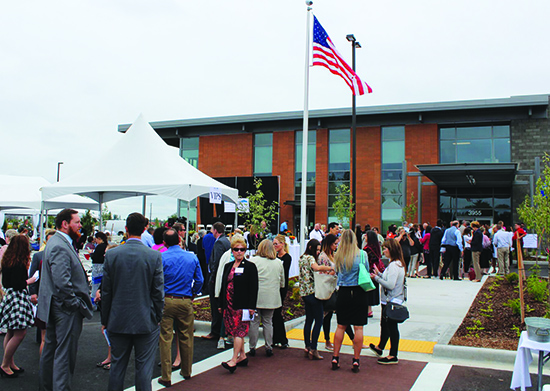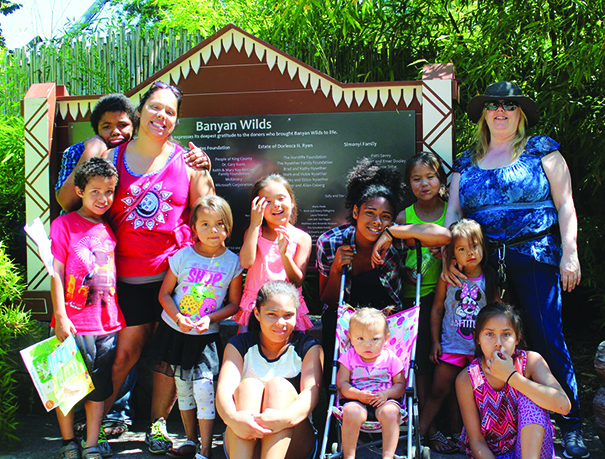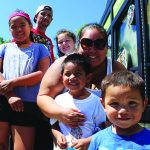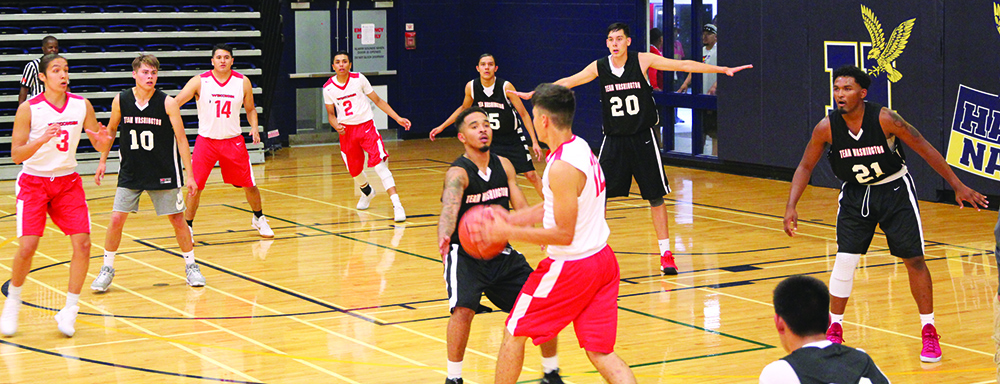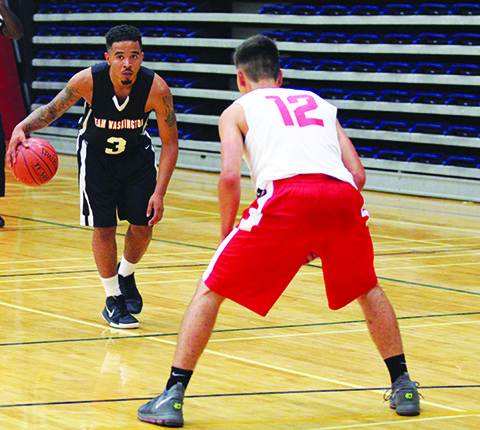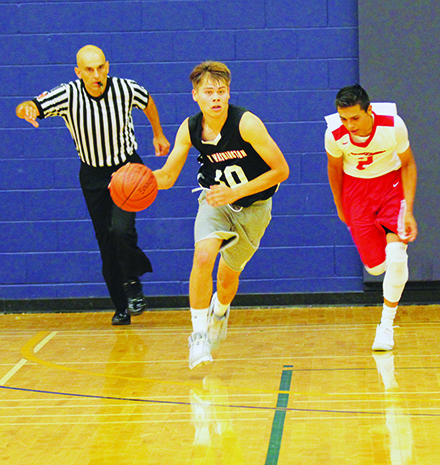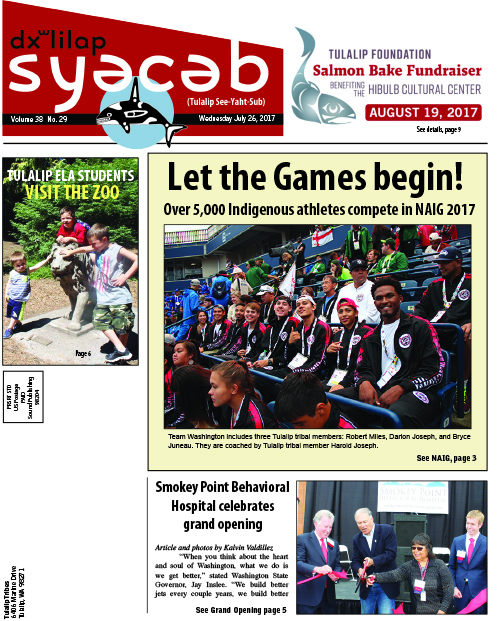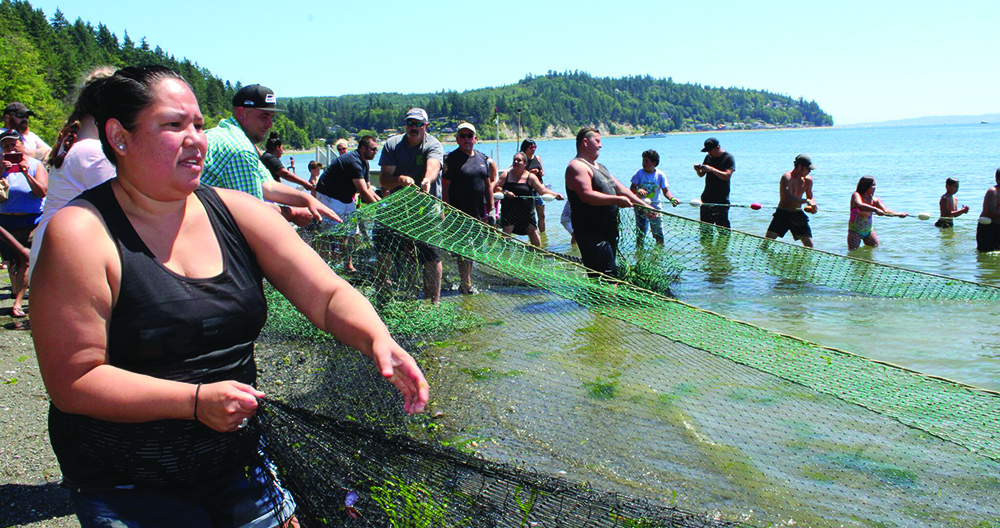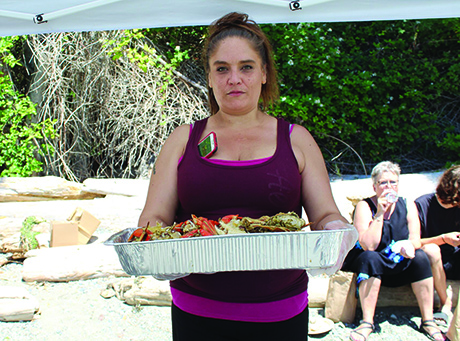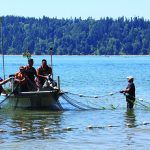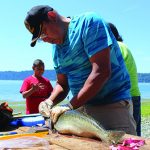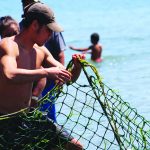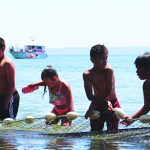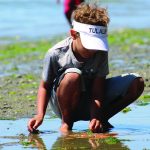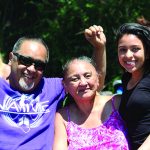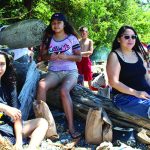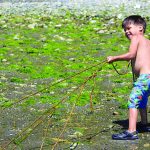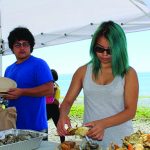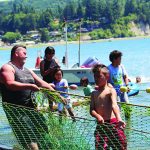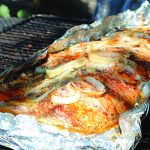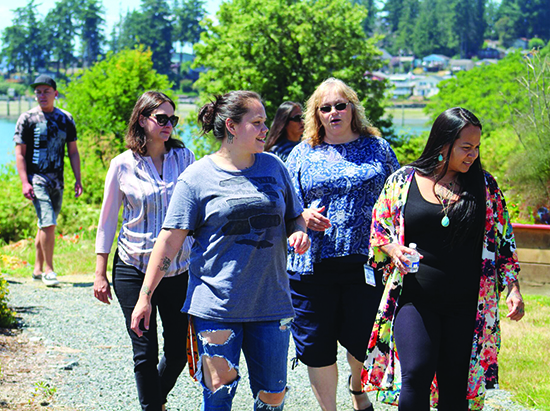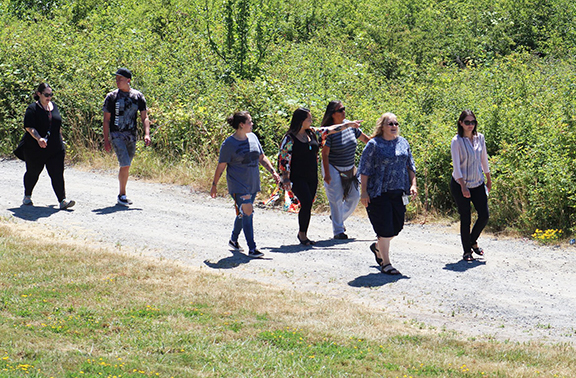Author: Kim Kalliber
Connie Ann Watters (1953 – 2017)
April 10, 1953 – July 19, 2017 Connie Ann Watters, 64, of Marysville, WA passed away July 19, 2017 in Everett, WA. She was born April 10, 1953 in Everett to George and Betty Taylor. She grew up in Tulalip, WA and worked for the Tulalip Tribes – Smoke Shop, Bingo, and with the Northwest Fish Commission. She is survived by her husband, David Watters; son, Lee McCluskey; stepson, Nic X. Moser; siblings, Calvin (Marguerite) Taylor, Gus (Janet) Taylor, Sharon (Steve) Taylor, Lance (Tammy) Taylor, and Rod Simpson Jr.; grandchildren, Tyson James Morris-Miller, Draven Lee Morris, Sage Jess Robbins, Aiyiana Shay Miller; numerous nieces, nephews, cousins and patrons of Kuhnle’s and Friendly’s Taverns. She was preceded in death by her parents; grandparents, Dallas “Tex” Taylor, Ruth and Joepete Gobin, Lizzie Krise, Bertha and Ike Issac Kona Sr; brother, Gordon Lynn Taylor; sister, Kimberly Lee Simpson; grandchild, Lindy “Zack” Morris II. Funeral Services will be held Monday, July 24, 2017 at 10:00 a.m. at Schaefer-Shipman with burial to follow at Mission Beach Cemetery.
Smokey Point Behavioral Hospital celebrates grand opening
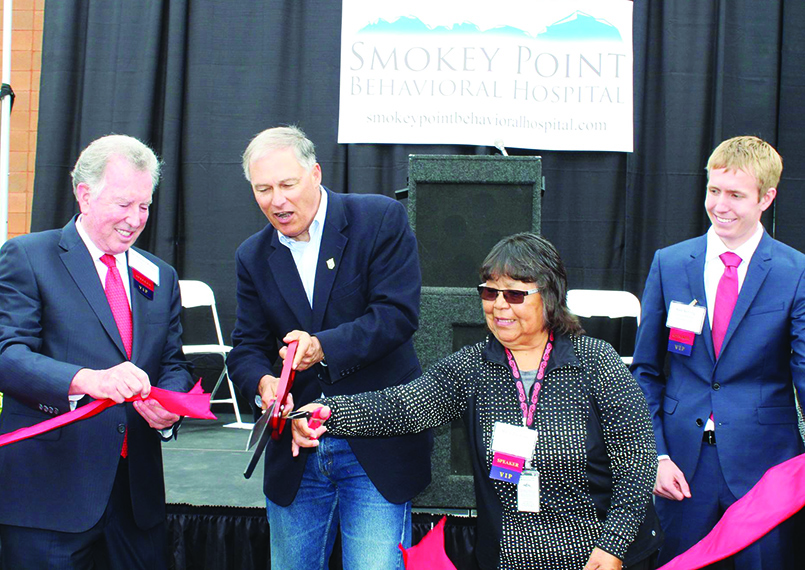
By Kalvin Valdillez, Tulalip News
“When you think about the heart and soul of Washington, what we do is we get better,” stated Washington State Governor, Jay Inslee. “We build better jets every couple years, we build better software every couple years. Isn’t it a joy to know that hundreds of Washingtonians are going to get better because of the Smokey Point Behavioral Hospital? What a joy to celebrate that effort and to know that these folks are going to get better.”
Hundreds of Snohomish County community members recently celebrated the grand opening of the new 70,000 square-foot behavioral hospital on July 13. The 115-bed psychiatric and addiction center will provide both inpatient and outpatient care for children, teens, adults as well as elders; and will offer specialized programs for the youth, women and veterans of the community who are in need of mental health care. Operated by US HealthVest, a behavioral healthcare company that runs multiple behavioral hospitals nationwide, the Smokey Point Behavioral Hospital aims to provide care to individuals suffering with mental disorders as well as to those battling drug addictions.
“This facility fulfills an incredible need in the state of Washington,” Governor Inslee continued. “We have not had the capacity, not even close to the capacity, to provide for the mental health of our citizens and this plugs an enormous gap in this community. The effort of this company to work with others including the Tulalip Nation, who I understand has a contract with this facility, what a beautiful partnership.”
The behavioral hospital is working with local tribes to offer culture-based healing for the Native American community. The hospital also features Native American artwork and incorporates traditional teachings for tribal members receiving care.
“I want to offer my congratulations on behalf of our elders, our youth and community at large for building a facility that was a need like twenty years ago,” expressed Tulalip Tribes Chairwoman, Marie Zackuse. “I want to thank Dr. Richard Kresch and US HealthVest for the work they have done these past five years, to build and now manage this facility. Your staff has worked with ours, and the Tulalip Tribes look forward to a strong and supportive relationship.”
“Thank you to Misty Napeahi, our Tulalip Tribes General Manager, for helping build a relationship between our Tribe and the Smokey Point Behavioral Hospital, it will help ensure Tulalip tribal members and other Native Americans in this area have access to the care they need,” said Marie.
Community members had the opportunity to tour the two-story facility during the grand opening celebration. The hospital features a recreational room with board games, coloring books and fitness equipment such as yoga mats and stability balls. The hospital also utilizes uplifting colors throughout the building and each patient room is free of any sharp edges and hooks, creating a safe environment for patients to grow and heal.
“We have been talking a lot recently about healthy communities,” Marie stated. “Working together as community partners to identify the needs of our people was a critical first step. The essential services in acute behavioral health care and addiction treatment are necessary if we want to heal our communities. Again, I just lift my hands to each and every one of you who helped this dream come alive.”
For further information, please contact the Smokey Point Behavioral Hospital at (844) 202-5555 or visit their website www.SmokeyPointBehavioralHospital.com
Monkey Business: Betty J. Taylor Early Learning Academy Visits Zoo
By Kalvin Valdillez, Tulalip News
On a sunny July 14 afternoon, students of the Betty J. Taylor Early Learning Academy traveled with their families to Seattle to visit with the animals of the Woodland Park Zoo. Each summer Early Learning provides a free zoo pass to each enrolled student and one accompanying adult. The Academy encourages families to join the students at the annual zoo trip and provides lunch to the students and each family member.
As the kids explored the zoo map alongside their instructors and families, they admired the gorillas of the Tropical Rainforest, the wolves of the Northern Trail and the red pandas of the Temperate Forest. Among the countless creepy crawlers, rattling reptiles, flying feathered-friends and many majestic mammals throughout the zoo, the most popular exhibit was in the African Savanna, home to animals such as lions, monkeys and zebras. The crowd favorite, however, were the giraffes.
This past June, the Woodland Park Zoo announced the birth of a baby girl giraffe and she spent this past weekend bonding with her father, whom she just met days prior to the Academy’s visit. Several students were overwhelmed with excitement upon seeing the yet-to-be-named three-week old giraffe.
“It’s really good to see the kids in a different environment,” states Betty J. Taylor Early Learning Academy Instructor, Stella Moreno. “They see that [the teachers] are excited and that we love the animals, so they get excited too. The zoo trip encourages them to want to learn about the animals and they really enjoy it. I think it’s a great interaction and a lot of fun, its memorable and we will never forget it.”
Team Washington almost pulls off incredible comeback in opening game
By Micheal Rios, Tulalip News
The 19U Team Washington men’s basketball team competing at the North American Indigenous Games (NAIG) features Robert Miles, Bryce Juneau, and Darion Joseph in the starting lineup. That’s three Tulalip tribal members who have been playing basketball since they were able to dribble a basketball. They were perfect for the team as they are all too familiar with the up-tempo, high intensity flow of rez ball. Their natural chemistry that comes from playing with one another since club teams in their Elementary school days is an added benefit as well.
Joining the three Tulalip boys on the team are four highly talented ballers from the Native tournament circuit. The complete roster is as follows:
Team Washington 19U Men’s basketball
- #2 Isiah Strom (Yakama)
- #3 Bryce Juneau (Tulalip)
- #10 Robert Miles (Tulalip)
- #15 Xavier Littlehead (Northern Cheyenne)
- #20 Mike Leslie (Muckleshoot)
- #21 Tre Williams (Nez Pierce)
- #34 Darion Joseph (Tulalip)
On Monday, July 17 Team Washington squared off with Team Wisconsin in the opening game of pool play. Wisconsin featured several players who took Gold at the previous edition of NAIG in 2014, so the game was expected to be highly competitive with Washington having their own expectation of making it to the medal round. The game was played at Humber College in Toronto, Canada.
Washington opened up the game playing 2-3 zone defense, while Wisconsin employed man-to-man defense. Wisconsin came out firing from 3-point territory against the zone and quickly took a 7-0 lead. However, Washington eventually settled in and forced several Wisconsin turnovers that led to transition buckets. The good guys ended the 1st quarter on an impressive 14-3 run, including 4 points each by Robert and Darion, to take a 14-10 game lead.
In the 2nd and 3rd quarters, the gold medal experience of Wisconsin showed. They continued to execute against the zone defense by hitting long-range shots and making running floaters in the lane. During the same time frame, Washington struggled to keep up with its own offense. Washington trailed 31-54 with 1:10 remaining in the 3rd quarter, the 23 point deficit was the largest of the game.
Down by 20+ points with one quarter to go usually leaves the trailing team defeated and without fight. But this wouldn’t be the case for a team with Robert, Bryce, and Darion. They’ve come back from large margins before and knowing it could be done they’d try to do it again.
Coming out with a sense of urgency in the 4th quarter, the three Tulalip boys led the charge with a frantic offense pace – all go, no hesitation. They combined to score 20 points while playing aggressive, lockdown defense in an amazing display of resiliency and teamwork. The no quit attitude had Wisconsin on their heels, as Washington cut the once 23 point deficit to only 6 points, 66-72 with just under two-minutes remaining.
Washington’s comeback fell just short though. There just wasn’t enough time left as Wisconsin held the ball as much as they could to eat up the game clock. Washington lost 69-73, and left the gym thinking they gave the W away. Following the game Bryce, Robert and Darion all shared the same sentiment: how well they played as a team down the stretch was how they’d play going forward and they were determined to still make the medal round.
“I think we’re still going to do real well at these Games. They needed those first few quarters together versus quality competition to figure how to play as a team,” reflected Coach Harold Joseph after the opening game loss. “In that second half they got comfortable and everything started to click both offensively and defensively. That momentum will carry over to our remaining games of pool play for sure. These boys still expect to rally and make the gold medal round.”
Over 5,000 Indigenous athletes compete in NAIG 2017
Let the Games begin!

By Micheal Rios, Tulalip News
On the spectacular evening of Sunday, July 16 an estimated 5,250 Indigenous athletes, coaches and support staff proudly marched into the Aviva Center, located just outside of Canada’s largest city Toronto, for the opening ceremony of the North American Indigenous Games (NAIG) 2017.
The over 5,000 athletes represent 26 regions across North America, consisting of 13 provinces and territories in Canada and 13 regions in the United States. Since 1990, Indigenous competitors between the ages of 13 and 19-years-old have taken part in the showcase that celebrates their athleticism and heritage. This year’s Indigenous Games marks the 9th edition of the multi-sport, multi-disciplinary event dedicated to Indigenous youth from the United States and Canada. The Games offer 14 sport competitions in addition to a vibrant cultural program.
For the first time in over 25 years NAIG returned to eastern Canada, notably allowing the province of Ontario to host its first ever Indigenous Games. For many of the young tribal competitors who reside on reservations in the United States, their athletic expertise allowed them their first ever entrance into Canada, to sightsee the City of Toronto, and, most importantly, to experience and connect with Indigenous cultures from around the continent.

During the opening ceremony of NAIG 2017, which was delayed approximately 90-minutes due to a thunderstorm, the capacity crowd of over 9,000 was rightfully energized by a surprise musical performance from Taboo of the Black Eyed Peas, flanked by traditional hoop dancers putting on a mesmerizing cultural performance.
“Ladies and gentlemen, it is an honor to be here. I represent the Shoshone and Hopi Nation,” said Taboo before performing his musical medley. “I am very proud to be Native American representing here with you all in Toronto. We represent the future. Natives, Indigenous, First Nations, and Aboriginals all coming together as one people, one nation, one tribe to make dreams come true.”
Spanning the week of July 17-22, more than 5,000 athletes from across the continent will compete in 14 sporting categories on the traditional lands and homelands of the Huron-Wendat Nation, Metis Nation of Ontario, Mississauga of the New Credit First Nation, Mississauga of Scugog Island First Nation, and Six Nations of the Grand River.
Government and Indigenous leadership from various regions took to stage to deliver rallying messages of encouragement, strength, and unity through sport.
“On behalf of the Six Nations, we are the Haudenosaunee and we welcome you. We are so excited and proud to be one of the community partners hosting these Games,” exclaimed Chief Ava Hill, representing the Six Nations of the Grand River. “To the athletes, these are your Games! It is so emotional to me as a leader to witness all you young people here today because each and every one of you is a dream come true. You are role models for the younger ones who are watching you. You are ambassadors for your families and for your communities. You are all winners! You are all winners just by being here and being a participant in the North American Indigenous Games.”
Following a rocking performance by A Tribe Called Red, fireworks filled the night sky at the Aviva Center to signal the beginning of the Toronto 2017 North American Indigenous Games.
Sport can be a launching pad for many great things yet to come for youth. Through participation in NAIG 2017, youth are given many opportunities to travel, make new Indigenous friends, and form life-long connections. As athletes participating in NAIG 2017, Indigenous youth learn many character building skills, such as team building, courage, determination, and goal-setting in a familiar setting located at the intersection of culture and sport. These are all skills that will help greatly as the youth move on to the next chapters in their lives.
Representing the Pacific Northwest region of the United States is Team Washington and its 19U men’s basketball team which includes three Tulalip tribal members: Robert Miles, Darion Joseph, and Bryce Juneau. They are joined by Michael Leslie (Muckleshoot), who played basketball for Tulalip Heritage during his sophomore year, Tre Williams (Nez Pierce), Xavier Littlehead (Northern Cheyenne), and Isiah Strom (Yakama). They are coached by Tulalip tribal member Harold Joseph, who participated in the first four editions of NAIG as a competitor and has coached in every NAIG since.
“Having three Tulalip tribal members on the team is special because they get to share this experience with the younger youth back home,” says Coach Harold. “All three of them are positive role models in our community. They each played high school sports; Robert at Heritage, Bryce at Marysville-Pilchuck and Darion at Archbishop Murphy, so the younger kids see that and it pushes them in the right way. I want to thank the Tulalip Tribe for supporting us and giving us the opportunity to represent all our people back home in our quest for a gold medal.”
July 26, 2017 syəcəb
Please use the following link to download the July 26, 2017 issue of the syəcəb:
https://www.dropbox.com/s/7db2fy2mewmal2e/July%2026%202017%20sy%C9%99c%C9%99b.pdf?dl=0
Special Needs Field Day, July 29
Super Seine: Tulalip Celebrates Culture at Spee-Bi-Dah
By Kalvin Valdillez, Tulalip News
Once a year during the summertime, Tulalip tribal members celebrate the Annual Spee-Bi-Dah beach potlatch. The gathering allows tribal members the opportunity to socialize with friends and family while enjoying foods that are caught and prepared traditionally such as salmon, shrimp, crab and clams. Tribal members utilize seine nets to capture the seafood and a traditional clambake follows.
“That’s how our ancestors gathered when they fished; they held a potlatch and shared the food,” explains Tulalip tribal member, Mona Ordonia. “Our ancestors actually used to harvest nettles and make nets out of the nettle stems, way back in the day. I harvested nettle myself and made some rope out of it, which was actually a special experience because now I understand how strong the ropes were. They are a lot stronger than some of the rope today, and that’s what our ancestors used before the modern nets.”
The skies were clear, providing beautiful weather for the July 8 beach event as many young tribal members seized the opportunity to splash about the water. Spee-Bi-Dah continues to unite multiple generations while honoring Tulalip’s culture and traditional way of life.
“I look forward to Spee-Bi-Dah every year because it’s such a great gathering,” Mona expresses. “And to also experience [seining]. That’s like bringing history to today’s experience, a way of not forgetting that’s how we did it back in the day. To be able to come together and share that experience, especially with the children, so that they can see that’s how we always did it. And to help; I like helping shuck the crab for everybody and I also like watching Tony [Hatch] cook the clams and shrimp on the pit, that’s so awesome to me.”
Tulalip Events Manager Robert Watson said the event wouldn’t be possible without the Tulalip Charitable Fund. “We’re so grateful that every year the Tulalip Charity fund donates money for us to put on the Spee-Bi-Dah event.”
Get Your Walk On
By Kalvin Valdillez, Tulalip News
The Tulalip Supplemental Nutrition Assistance Program Education, or SNAP-Ed for short, is making strong efforts to promote healthy lifestyle choices in the Tulalip community. SNAP-Ed teaches about the importance of good nutrition and exercise, alternating between live cooking demonstrations and guided workout regimens each week for Wellness Wednesdays at the Tulalip Administration Building.
Wellness Wednesday is popular amongst Tribal employees as the program has many participants who attend on a regular basis. However, SNAP-Ed is looking to expand their services to Tulalip community members who may not work for the Tribe as well as for those who aren’t able to make it to the Administration Building on Wednesdays. In an effort to reach more community members, SNAP-Ed recently created the Tulalip Tribes Walking Club and held the first community walk on July 11.
“We are implementing the Waking Club to start at a low impact level to get tribal members and community members to be more fit, get outside and be more involved in physical activities,” explains SNAP-Ed Assistant, Traci Fox. “We want to start a community within the community, for physical fitness, so that people feel like they have support and have other people they can talk to about their journey through physical fitness.”
The Walking Club will host one to two sessions per week and the locations will vary between the Karen I. Fryberg Health Clinic and Tulalip Administration Building as well as other areas throughout the community. Walking Club members are awarded with incentives for their efforts and also have the chance to win prizes at the end of each fifteen to thirty minute walking sessions.
“We’re trying to reach a larger demographic and make sure that all tribal people and everyone in the tribal community can be involved in physical activity and can learn to eat better to have a healthy lifestyle,” Traci states.
For further details about joining the Tulalip Walking Club please contact the SNAP-Ed program at (360) 716-4899.

